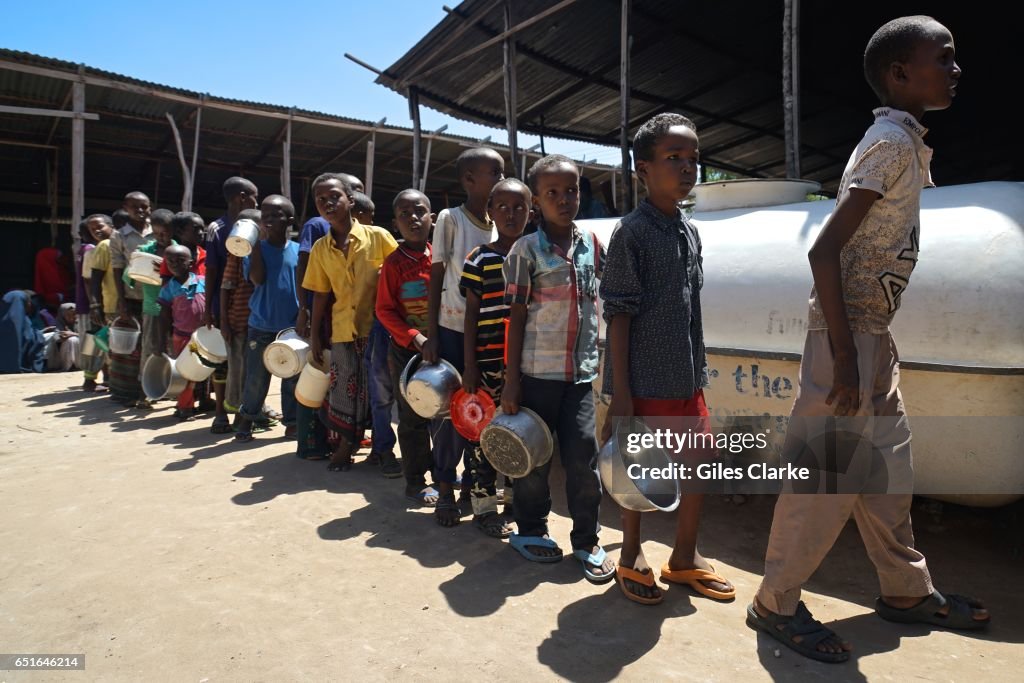United Nations Relief Efforts in Somalia
MOGADISHU, SOMALIA - MARCH 9: Somali boys wait in line at a World Food program 'wet food' distribution center in central Mogadishu. Hundreds of new arrivals, mostly from the hardest hit drought regions in the south, are pouring into Mogadishu in search of food. According to a United Nations February 2017 report, famine could soon be a reality in Somalia, largely due consecutive and severe drought. There are already worrying similarities to the situation in 2011, when 260,000 died. In the worst affected areas, chiefly rural communities, crops have been wiped out and livestock died, while communities are being forced to sell their assets, and borrow money and food to survive. Some 6.2 million are in need of humanitarian assistance. Of these, 3 million people cannot meet their daily food requirements and need urgent humanitarian assistance. UN humanitarian efforts, from UN agencies such as UN OCHA, World Food Program (WFP) and UNICEF as well as on the ground NGO's, are all in overdrive mode providing the a combination of food distribution, access and security as well as medical support and treatment. Cholera has now taken hold in remote areas as water sources become scarce and that available has become expensive to buy. Villagers affected, mostly in the southern part of the country, have resorted to drinking stagnant and dirty water with the last count of cholera victims now past 7,500. With the rainy season due in April, the probability of full-out famine will become a stark reality if the season again provides a lower than needed rainfall amount. (Photo by Giles Clarke/Getty Images)

PURCHASE A LICENSE
How can I use this image?
€475.00
EUR
DETAILS
Restrictions:
Contact your local office for all commercial or promotional uses.dRXY1cGZTzuap9AlWwhOQg
Credit:
Editorial #:
651646214
Collection:
Getty Images News
Date created:
March 09, 2017
Upload date:
License type:
Release info:
Not released. More information
Source:
Getty Images Europe
Object name:
dsc07922.jpg
Max file size:
7016 x 4678 px (23.39 x 15.59 in) - 300 dpi - 6 MB
- United Nations,
- Famine,
- Somalia,
- Child,
- Humanitarian Aid,
- World Food Program,
- Accidents and Disasters,
- Adult,
- Boys,
- Charity and Relief Work,
- Crisis,
- Delivering,
- Drought,
- Environment,
- Horn of Africa,
- Internally Displaced Person,
- Men,
- Mogadishu,
- One Person,
- People,
- Politics,
- Politics and Government,
- UNICEF,
- Waiting,
- Water,
- Weather,
- Women,